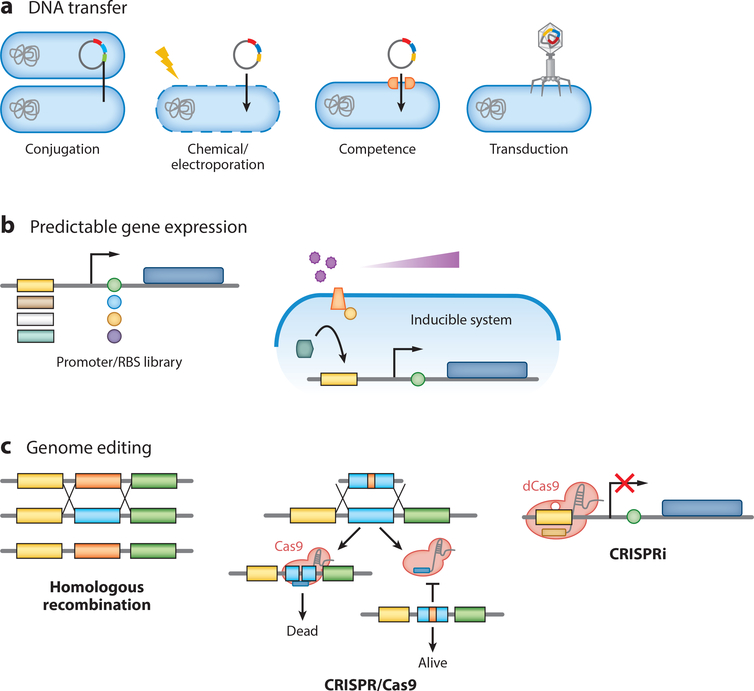Figure 2.
Current state of genetic engineering tools. Manipulation of host-associated microbes is dependent on the ability to modify their genetic content, (a) DNA can be transferred to microbes by conjugation or electric or chemical disruption of the cell membrane, inducing natural competence, or by phage transduction.(b) Expression of genes or pathways can be controlled by creation of mutant promoter and/or ribosomal binding site (RBS) libraries or by using an inducible system in which an exogenous molecule drives expression in a concentration-dependent manner, (c) Genome editing is traditionally accomplished through homologous recombination by use of selectable markers. Recent advances in the use of clustered regularly interspaced short palindromic repeats (CRISPR)-based technologies have significantly contributed to development of genome-scale engineering tools. Genome editing with Cas9 relies on the use of Cas9 as a negative selection to cleave unmodified DNA. CRISPR interference (CRISPRi) uses a mutant form of Cas9, termed dCas9, which can bind but not cleave DNA, thereby regulating gene expression by blocking transcription.

